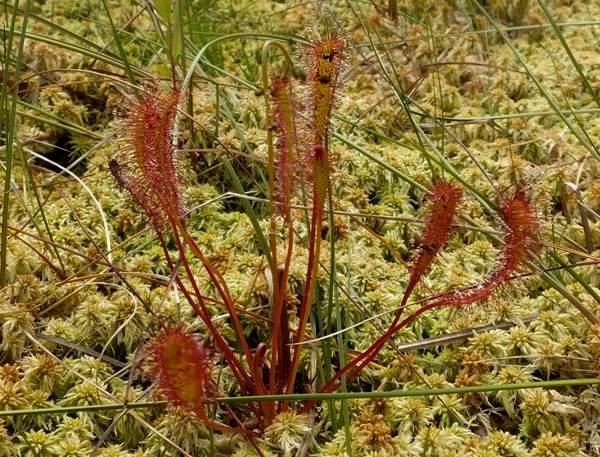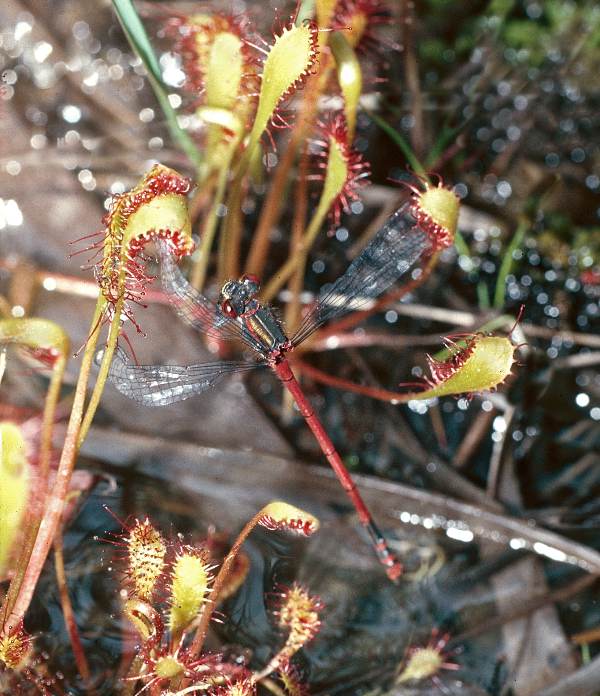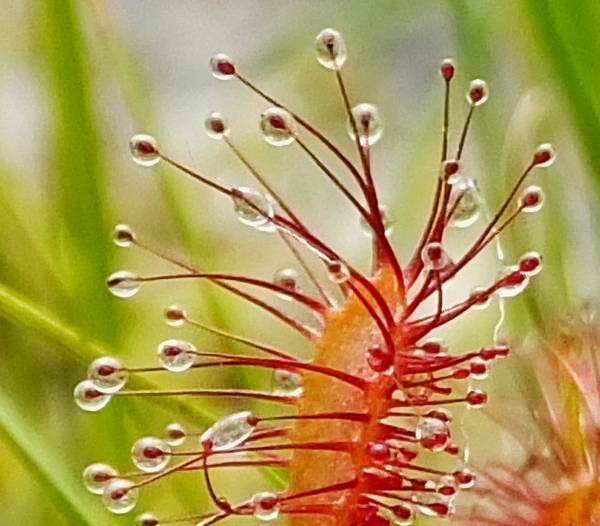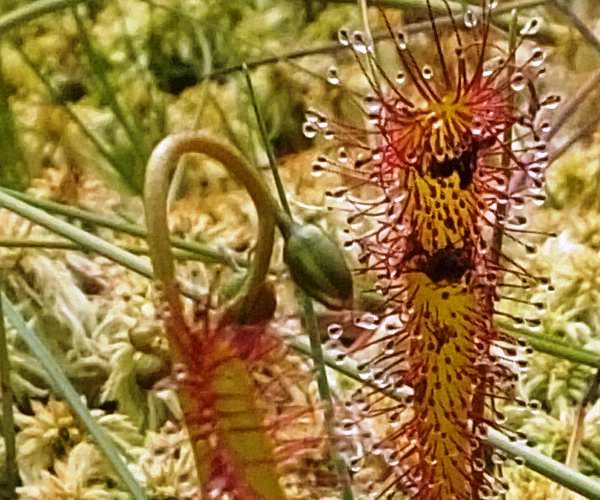Trees Birds Mammals Fish Amphibians Reptiles
Wild Algarve
Bookshop
Drosera anglica - Great Sundew
Phylum: Magnoliophyta - Class: Equisetopsida - Order: Caryophyllales - Family: Droseraceae

Description
Also referred to as English Sundew, this insectivorous plant has a thick coating of red hairs on the upper surface of its leaves, which are long and narrow and taper down into stalks that are more or less hairless. In contrast the leaf stalks of the much more common Round-leaved Sundew Drosera rotundifolia are covered in fine down.

Each hair on a leaf is tipped with a drop of sticky liquid that has the ability to trap small insects, upon which the plant feeds. Great Sundew's common name originates from these droplets of water that in the past many people thought to be dew rather than a substance produced by the plant itself. Once trapped and stuck fast the insect is enfolded in the leaf and, over a period of a couple of days, a further secretion from the centre of the leaves reduces the insect to a form that can be absorbed by the plant as food.

Great Sundew has very small white flowers on a long stem. Growing to a height of 20cm, it is mainly found in wet peat bogs, as it favours the kind of acid soils that are found in such places.
Distribution
This plant is rare in England and Wales but less so in western Ireland and in Scotland. Great Sundew also occurs in many northern European countries as well as in some temperate parts of Asia and North America.

Above: Great Sundew at Cors Fochno (Borth Bog), West Wales, in late July
Blooming Times
Great Sundew flowers in July and August. In the picture above, the flower bud is yet to open - or it may have opened during bright sunlight and then closed up during the duller weather in which this picture was taken.
Acknowledgements
This page includes pictures kindly contributed by Betty and Tony Rackham.
Sue Parker's latest ebook is a revised and enlarged edition of Wild Orchids in The Burren. Full details here...
Buy it for just £5.95 on Amazon...
Sue Parker's new ebook is a comprehensive and fully revised edition of her acclaimed field guide to the Wild Orchids of Wales. Full details here...
Buy it for just £5.95 on Amazon...
Please Help Us: If you have found this information interesting and useful, please consider helping to keep First Nature online by making a small donation towards the web hosting and internet costs.
Any donations over and above the essential running costs will help support the conservation work of Plantlife, the Rivers Trust and charitable botanic gardens - as do author royalties and publisher proceeds from books by Pat and Sue.